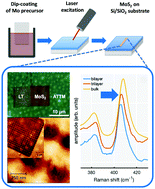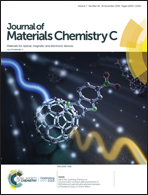Ambient atmosphere laser-induced local ripening of MoS2 nanoparticles
Abstract
Transition metal dichalcogenide (TMDC) ultrathin layers have attracted considerable interest in the recent years. Their peculiar functional properties can be exploited in electronics, spintronics, optoelectronics, photonics, energy production, harvesting and storage. The availability of cost-effective, green, and efficient growth processes is of paramount importance and significant effort has been made in the research on various production methodologies. Here we report on a simple laser-based process which allows the direct writing of thin TMDC layers. In detail, by direct exposure to laser irradiation of a dip-coated MoS2 precursor, we obtained a three-dimensional arrangement of MoS2 nanoparticles in the form of platelets with a lateral dimension of about 50 nm and thickness down to bilayers. The characterization was assessed by AFM and Raman spectroscopy. The platelets are formed only in the central region of the laser spot, confirming that the material out of the spot is indeed an unprocessed precursor. By tuning the precursor deposition, we demonstrate the fabrication of MoS2 patterns with designed layer numbers. The proposed approach is highly versatile and can be applied also for the controlled growth of other TMDCs, as proved by the successful generation of WS2 layers.



 Please wait while we load your content...
Please wait while we load your content...